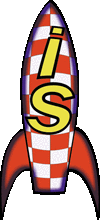
|

|
I |
| S | ||
| D | ||
| A | ||
| T |
- Isdat home
- Tour
- Using
- About
- Status
- Download
- Dataset modules
- Clients
- Reference manuals
- Developer
- History
Page maintained by
Reine Gill

ISDAT - Interactive Science Data Analysis Tool
Summary of features
Recent progress in computer, mass storage, and network technology has facilitated a dramatic improvement and flexibility in the software tools used for scientific data analysis. ISDAT is a software tool, utilising such modern techniques, under development at the Swedish Institute of Space Physics, Uppsala Division, in collaboration with several other laboratories within the field of experimental space physics.The ISDAT development started in 1989 by formulating a set of general requirements from a science user's viewpoint. These requirements led to a set of assumptions about the near future computer and software development, a set of standards and an ISDAT development model. At the current stage, the ISDAT software tool is characterized by:
- An interactive data analysis environment
- A client / server
- Great flexibility in the distribution of processing power and data bases
- Project and instrument specific input formats
- A very general internal data structure
- Possibilities to combine data from several projects and instruments
- A possibility for the user to add personal analysis and display software modules in C or IDL languages.
- Interfaces to commercial software packages like IDL and MATLAB.
- Output in CDF, Postscript, or ASCII formats
- Possibilities to run it on a number of UNIX platforms as well as Open/VMS systems
The ISDAT distribution and use is subject to certain rules
and limitations. As soon as you have read and agreed on these rules, you
are welcome to fetch the documentation of the ISDAT, as well
as the isdat code via
CVS .
There are also project and instrument specific
pages with access restricted to the instrument teams.
Go to IRF-U home page
ISDAT summary /IRF-U/ gh@irfu.se